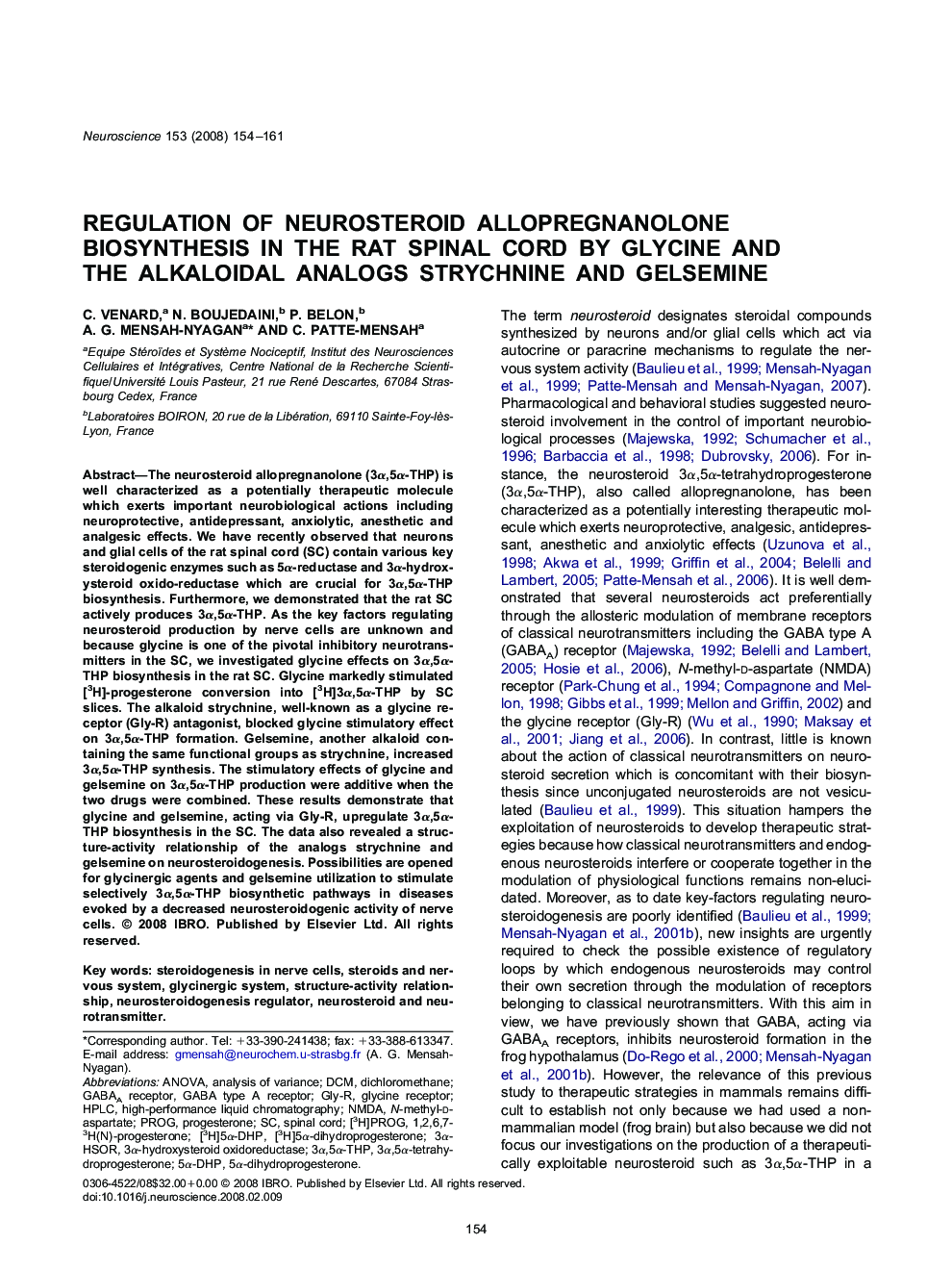| Article ID | Journal | Published Year | Pages | File Type |
|---|---|---|---|---|
| 4340623 | Neuroscience | 2008 | 8 Pages |
The neurosteroid allopregnanolone (3α,5α-THP) is well characterized as a potentially therapeutic molecule which exerts important neurobiological actions including neuroprotective, antidepressant, anxiolytic, anesthetic and analgesic effects. We have recently observed that neurons and glial cells of the rat spinal cord (SC) contain various key steroidogenic enzymes such as 5α-reductase and 3α-hydroxysteroid oxido-reductase which are crucial for 3α,5α-THP biosynthesis. Furthermore, we demonstrated that the rat SC actively produces 3α,5α-THP. As the key factors regulating neurosteroid production by nerve cells are unknown and because glycine is one of the pivotal inhibitory neurotransmitters in the SC, we investigated glycine effects on 3α,5α-THP biosynthesis in the rat SC. Glycine markedly stimulated [3H]-progesterone conversion into [3H]3α,5α-THP by SC slices. The alkaloid strychnine, well-known as a glycine receptor (Gly-R) antagonist, blocked glycine stimulatory effect on 3α,5α-THP formation. Gelsemine, another alkaloid containing the same functional groups as strychnine, increased 3α,5α-THP synthesis. The stimulatory effects of glycine and gelsemine on 3α,5α-THP production were additive when the two drugs were combined. These results demonstrate that glycine and gelsemine, acting via Gly-R, upregulate 3α,5α-THP biosynthesis in the SC. The data also revealed a structure-activity relationship of the analogs strychnine and gelsemine on neurosteroidogenesis. Possibilities are opened for glycinergic agents and gelsemine utilization to stimulate selectively 3α,5α-THP biosynthetic pathways in diseases evoked by a decreased neurosteroidogenic activity of nerve cells.
